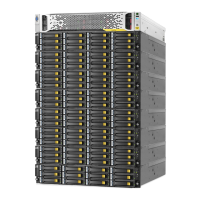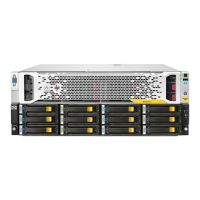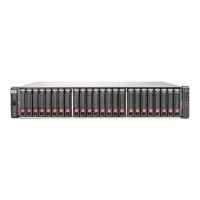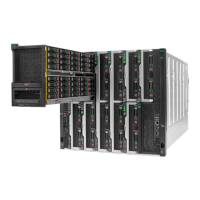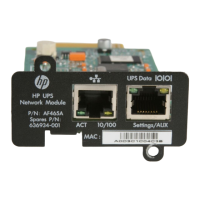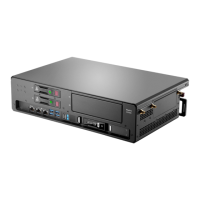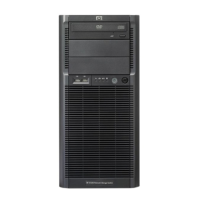3. If you have more subnets than physical ports available on the StoreOnce Backup system and
your network environment supports VLAN subnets, consider using VLAN subnets to transfer
backup data to the StoreOnce Backup system. The StoreOnce Backup system must be connected
to a port on the network switch that is trunked and tagged.
4. If you wish to increase the frame size for a subnet, whole values between 1500 and 9000
kbytes are supported. Be aware that all components on the network, switches, etcetera, must
also support the larger frame size.
The following table shows network connections and IP address requirements for different port
combinations (port sets).
Table 4 Physical network port connection options and IP address requirements
IP addresses requiredNetwork configuration notesWhen to usePort set contains
Single network connection,
therefore one IP address only
Connect to a 1 Gbit or a 10
Gbit ethernet port and use
If the network interface is
required solely for
Single port only
per subnet configured for theindividual 1 Gbit and 10management of the
port set. (May be configuredGbit ethernet ports to createappliance or if low
for IPv4 and IPv6 subnet, or
for VLAN subnets.)
port sets, as best meets
requirements.
NOTE: If DHCP enabled
on network and connected
to 1 Gbit ethernet LAN port
1, StoreOnce Backup will be
discovered automatically on
network.
performance and resiliency
backup and restore are
acceptable.
Or, if servers to be backed
up are split across multiple
physical networks with
independent access to the
appliance.
Depends upon number of
networks and bonding
required
Two or more network ports
are configured within the
same port set and presented
Recommended for backup
data performance and also
for resiliency of both data
Multiple ports with bonding
When using bonded ports
the full performance of
1 Gbit ethernet
on a single IP Address for
subnet configuration.
and management network
connectivity.
bonded links will only be
realized if multiple host
servers are providing data.
2, 3 or 4 ports bonded = 1
IP address per subnet
Can make physical
connections to up to four 1
Gbit ethernet ports.
Mode 1 = One active port
on each bonded set, good
for resiliency
No bonding between 1 Gbit
ethernet and 10 Gbit
ethernet ports is allowed.
2 ports bonded leaves 2
ports free for use either in
one more port set, if
Can make physical
connections to both 10 Gbit
Mode 4 = Increased
throughput, but requires
switch configuration (LACP)
bonded, or in two more port
sets if not bonded
ethernet ports (not supported
on HP 2700).
Mode 6 = Good for
throughput and availability,
no switch configuration
10 Gbit ethernet
2 ports bonded = 1 IP
address per subnet
Physical ports and IP addresses 37

